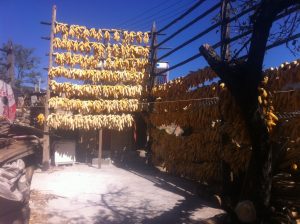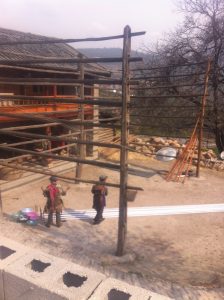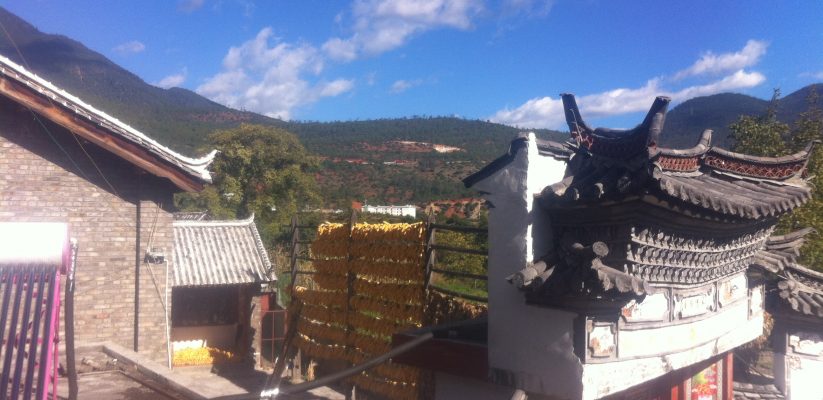Written by Harriet Evans
What is cultural heritage in China today? Dominant top-down practices of cultural heritage in China are accompanied by the massive construction of museums, competition for UNESCO recognition, and projects of heritage tourism increasingly associated with the One Belt One Road initiative and designed to boost regional and local incomes. But how do local communities both implicated in these large-scale projects and their discursive effects approach the issue of what to preserve? How do local people’s memories of their past cultural experiences inform local projects of cultural preservation?
Grassroots Values: Local Perspectives on Cultural Heritage in China is a collection of papers that emerged out of a three-year research grant awarded by the Leverhulme Trust, for a project titled ‘Conflicts in Cultural value: Localities and Heritage in Southwest China.’ The papers in this volume move beyond the southwest to include areas stretching from Tibet, northern Yunnan and Anren, Sichuan, to Huangshan in Anhui and Quanzhou on the south-eastern seaboard. Together they offer an ethnographic exploration of diverse places and practices undertaken largely by young Chinese scholars. The overall aim is to foreground the local as a site of negotiation between state, entrepreneurial and local community interests in an economic, political and cultural context in which heritage practice in China has been transforming local social, economic and cultural life and reshaping domestic and global notions of China’s national identity.
We approach the local not as a fixed spatial definition of place but as a shifting arena of everyday life and belonging underpinning ordinary social interactions. Heritage emerges as a series of creative practices and possibilities that by definition are multiple. Given the pervasive power and appeal of the state’s ambitious projects of museum building and world heritage recognition, a dominant heritage discourse of ‘wenhua yichan’ has percolated through to local people’s experience of how they negotiate ideas about preservation and conservation of local cultural value. The complex picture of heritage across our different sites cannot be explained by a binary relationship between state and locality, particularly if the latter is inscribed with ideas of resistance and subversion of state power. Rather, multiple heritages are operating at different levels and through different modes of encounter and memory between state, commercial enterprise, tourism and local communities. Potential sites of conflict between locality and state lead to negotiated redefinitions of heritage—to heritage alternatives—to accommodate desires both to maximise economic benefit from heritage construction and to preserve locally-centred ritual and cultural practices. It would be mistaken to think that the local is not concerned with economic benefit; the desire for material well-being is locally as well as centrally defined. Rather than see the economic as contrasted with local ritual/cultural practices, it is a matter of accommodating the varying desires and hopes whose political, economic/material, spiritual and ethical implications come into contact with each other, leading to a redefinition of heritage and the remaking of the local. Crossing our different sites of enquiry this volume shows a diversity of ‘locals’—the remote rural, the urban neighbourhood, the sacred mountain, mainstream heritage sites, and the museum town—as different and alternative heritage practices spanning Han and ethnic minority practices.

From powerful centres of national heritage value, such as Quanzhou, through to small Naxi communities off the beaten track in northern Yunnan, wenhua yichan has thus brought a new focus to people’s ideas about what they think is valuable, and what then becomes a value of loss. It has brought a precision to local questions about what people need/who people are that may be under threat and therefore in danger of losing. It also redefines tradition in light of the new heritage projects that have been emerging across the sites of our research and beyond, leading to what can be thought of as ‘the newness of tradition.’
One crucial dimension of the alternatives that are emerging in this process is the framing of moral/ethical ideals and realities, often around claims, explicit or implicit, to authenticity. Some scholars argue that the ‘authentic’ (yuanshengtai ) may be best understood as a component of a national discourse of cultural authority shored up by tradition. In conditions where cultural heritage offers substantial economic returns, the evocation of ‘authentic traditions’ may cement a subjective and collective sense of belonging and memory that paradoxically both reproduces and seeks to resolve possibly violent competition for resources. Such competition is also fed by the state’s increasing interest in asserting control over ‘cultures’ by investing more and more in heritage building projects. Again, claims to authenticity may be prescribed by appeals to the outside, in the form of bringing in expertise of local intellectuals and heritage practitioners, or of appealing to diasporic yearnings of belonging. In the process of such appeals, the local becomes separate and assumes a distinct identity. Elsewhere, such claims may be associated with practices of what some might term the ‘deep rural’, or increasingly marginalised landscapes and places linked to ancestral legacies of a deep past which exists in memories and fragments of ritual practices retrieved from recent decades of violence and destruction.

All these alternative heritages converge in their concern for the right to preserve and conserve for the future. At one level this concern forms part of a shared yet contested discourse about how and what to preserve —what old things to preserve and what new things to construct. It is also present in an ethical value of remembering as a creative process involving the return of people to their hometown/village of origin to invest in honouring their ancestry. Ideas of preserving and remembering may also be associated with loss and fear of humiliation. They also have to distinguish between different things/entities that are being preserved and remembered at different levels in the relationships between people, things, ideas and places. All these create different heritage values that operate in different ways, with different meanings, creating differently embodied and spatialised notions of subjecthood and cultural value.
Harriet Evans has written extensively on the politics of gender and sexuality in China, and on political posters and visual culture of the Mao era. Her third monograph, Beijing from Below: Stories of Marginal Lives in the Capital’s Center (Duke University Press) will appear in May 2020. Her post here corresponds with work she has been conducting together with Michael Rowlands on local approaches to cultural heritage, for three-year research project funded by the Leverhulme Trust. Image credit: taken by author in the autumn of 2014 and March 2015 in Baishuitai, Yunnan.
- TV Drama Discourse on Stay-at-home Fathers in China: Super Dad & Super Kids - January 28, 2022
- Freud and China - January 20, 2022
- “Cultural China 2020″—A Different Take on China - January 7, 2022

[…] opening piece, written by Harriet Evans explores the ways in which local communities approach the issue of what to preserve and how local […]